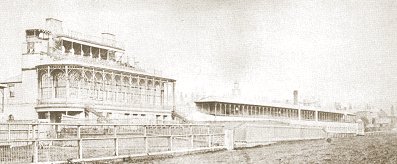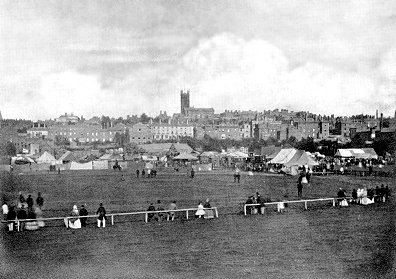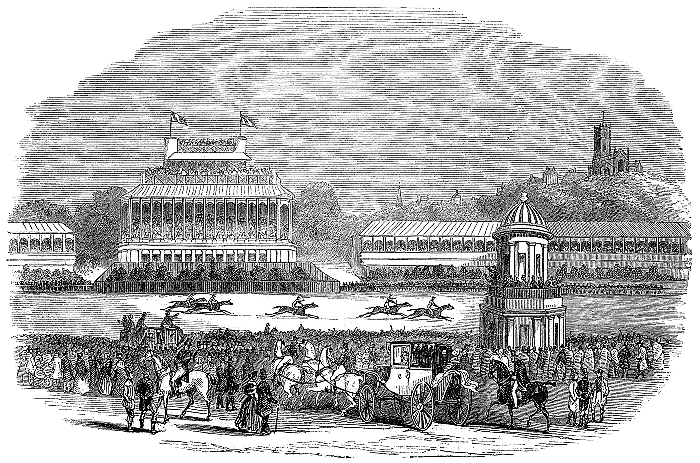| The Old Course
For the first 50 years of its life, Wolverhampton Race
Course was situated at Broad Meadows, an area of
marshland just north of Tettenhall Road, and to the west
of Wellington Road, now known as Waterloo Road. In the
16th
century the area became known as Hungry Leas because of
the poor wet land which often flooded. The land, which
belonged to Lord Darlington, was leased by the Racing
Committee, who were then faced with the expensive task
of draining the area in readiness for their first
meeting on 15th and 16th August,
1825. The committee began collecting subscriptions at a
meeting held at the Lion Inn in March 1825. T. W.
Giffard, and Henry Hordern were appointed as Stewards
and Francis Marshall became Clerk of the Course.

The location of Broad Meadows. |
|
Although Monday 15th August was a
wet day, large numbers of spectators were there, filling the row of
stands and booths. The spectators had to be careful because the
event attracted a large number of pickpockets. The most important
race at the meeting was the 3 mile Darlington Cup during which John
Mytton’s chestnut gelding “Euphrates” finished in first place.
|
|

The grandstand. |
The August meetings were so successful that a number
of buildings were erected on the site. A handsome
grandstand was built in 1827 and over the next 10 years
or so other stands were added, by which time the row of
stands and booths stretched for a quarter of a mile. |
|
There were many side shows, shooting galleries,
and even a cock-pit for cock fighting, which became a popular
activity in the early years. During Race weeks cock fights were
arranged at the old cock-pit in Townwell Fold where people betted
for high stakes. In 1828 a contest between birds from Staffordshire
and birds from Shropshire resulted in prize money of 200 guineas.
|
| The area still suffered from occasional floods. In
1831 tents were blown down, booths washed away, and
hundreds of people had to remain at the course until the
flood water had subsided. Several ladies were carried
shoulder-high through the flood by opportunistic
gentlemen who charged them half-a-crown for the
privilege. |

An early race meeting. |
|

The racecourse in 1844. From the
Illustrated London News. |
|
By the 1850s the big race at the annual August
meeting was the Wolverhampton Handicap during which large bets were
taken. In 1853 the winner was “Doubt” owned by Dr. William Palmer of
Rugeley who took a bet with bookmaker Fred Swindell for £500. Both
men were sharing a room at The Swan, and in order to avoid a loss,
should “Doubt” loose, he gave Swindell a poisoned drink on the night
before the race, planning to administer an antidote the following
day, if the horse won. If “Doubt” had lost the race however,
Swindell’s death would make the bet void. Luckily for Swindell
“Doubt” came in first place and the antidote was duly administered
so that Palmer could collect his winnings of £3,500.
Race meetings continued at Broad Meadows until
the lease ended in 1878 when West Park was built on the site. The
meetings had been successful events, attracting many spectators, and
so the decision was taken to find a new site so that horse racing
could continue in the town. |
 |
|
 |
Return to
the contents |
|
Proceed to A
New Racecourse |
|